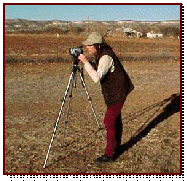
Photosharing – Inspire, Enthuse, Provoke?
How can we creatively use photosharing sites to inspire, enthuse our students? For me a no brainer again. As stated in the discussions, I have often wanted my students to create a portfolio of some sort. The feature on Blackboard would not work for what I wanted it to do. I would like students to create a portfolio of their work, their discoveries, and tell us how they accomplished things. It needs to be open so that other students can visit, and it needs to be interactive. Photosharing could be a way to accomplish this.
It could also be used to showcase works of others, suggesting ways to accomplish a certain look or feel. One could put up resource images, that is if I want students to make a poster with certain elements in it, they could be provided there.
Not sure if I will use Photosharing or a blog, probably the latter, but I have game in my course where students add elements to a foundation image and tell a fairy tale that goes with their new element. A blog is far better than the discussion group method, you can see each image as the story grows..
Then I began pondering how I would use it in another course. Perhaps in an anthropology course putting pictures up and having students write stories on them, or research them. Likewise in the environmental course, place powerful images up and have students write about what they see. I recall an instructor once doing this in a Psyche course, putting up an image and having the students write about what they saw… tell a story surrounding the image.









